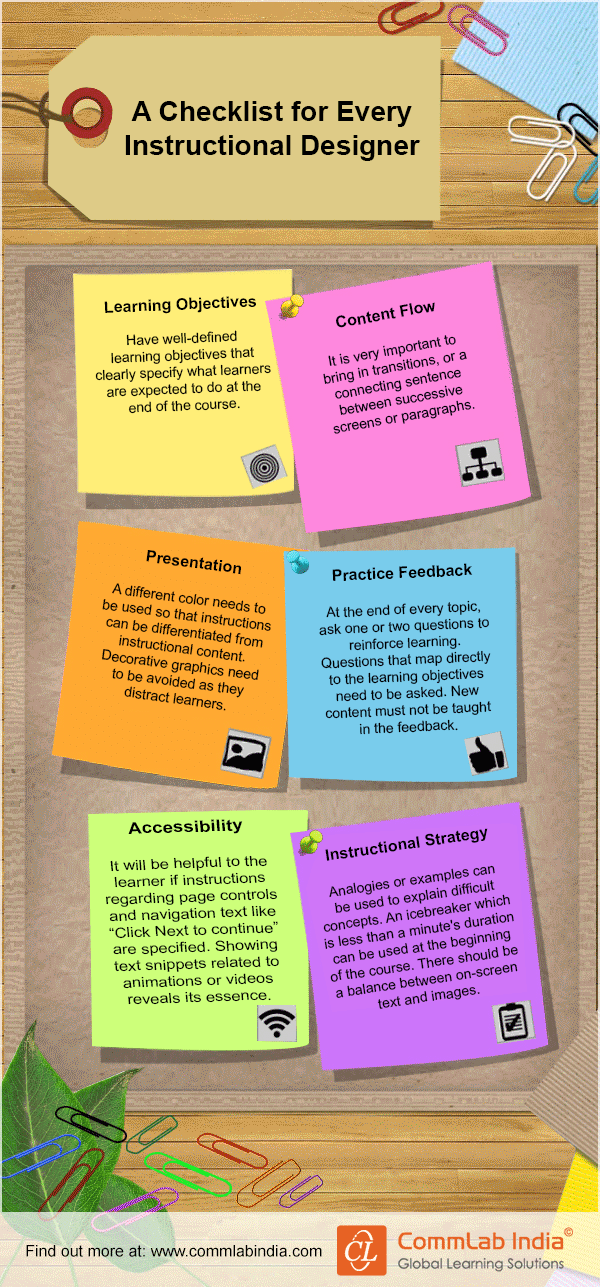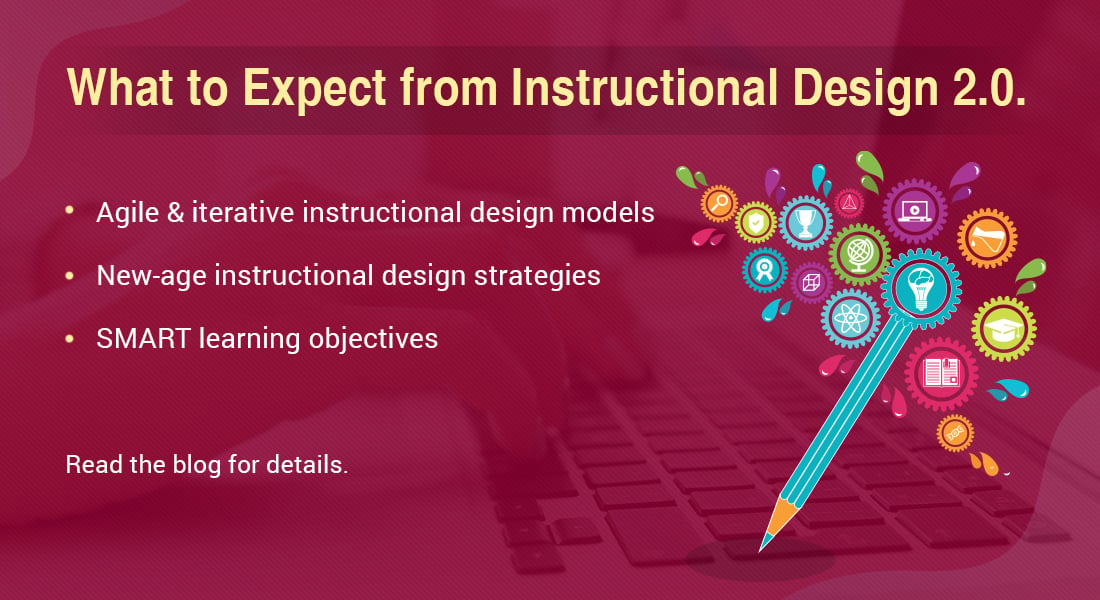A Checklist for Every Instructional Designer [Infographic]
![A Checklist for Every Instructional Designer [Infographic] A Checklist for Every Instructional Designer [Infographic]](https://blog.commlabindia.com/hubfs/blogs/checklist-for-instructional-designer-infographic.png)
In today’s highly competitive business world and scattered attention spans, the importance of effective instructional design cannot be emphasized enough. And this makes the job of instructional designers way more challenging than what it usually seems. To ensure you’re heading in the right direction, it is good to have a checklist in place. They can make your job a whole lot easier and help you to maximize the success of your custom eLearning program.
A checklist ensures you cover essential elements and avoid potential problems later. This is especially important in eLearning, where intricate details must align with instructional design models and learner needs to deliver effective, learner-focused courses.
→ Download Now: Instructional Design 101
Well, now that we’ve understood the importance of a checklist, let’s see what the checklist for instructional design is. It will enable the instructional designers to focus on creating custom eLearning courses that resonate with their course objectives.
Checklist for Instructional Designers
Here’s a checklist that can be used as a quick reference tool while analyzing instructional content.
Top 8 Benefits of Having an Instructional Design Checklist
Why an Instructional Design Checklist is of Great Value?
The benefits include:
- Quality Assurance
- Alignment with Learning Objectives
- Efficiency
- Comprehensive Coverage
- Adherence to Best Practices
- Consistency
- Time and Resource Management
- Effective Communication
- Quality Assurance: An instructional design checklist serves as a quality control tool. It ensures that all the necessary components and steps in the instructional design process are considered and executed correctly. This helps maintain consistency and quality in the learning materials.
- Alignment with Learning Objectives: Second benefit of having an instructional design checklist is that it helps define learning objectives clearly and ensures that the instructional materials align with these objectives. This aspect is crucial for effective learning outcomes.
Ready to transform the way you create learning objectives? Let Generative AI show you how!
- Efficiency: A checklist provides a clear roadmap for the designing and development process. Therefore, it streamlines the instructional design process. Instructional designers can follow the instructional design checklist step by step to avoid the risk of overlooking important elements or repeating unnecessary tasks.
- Comprehensive Coverage: Creating custom eLearning courses can be a little overwhelming at times. This can cause instructional designers to miss out on some important aspects of effective eLearning design and development. Whereas, a checklist prompts instructional designers to consider various aspects of course design. It can be related to content, eLearning assessments, instructional strategies, learner engagement and instructional design examples.
58% of talent development professionals believe test assessments effectively measure learning.
Source: ATD Research: Most Organizations Use Performance Assessments
- Adherence to Best Practices: A comprehensive instructional design checklist incorporates best practices and evidence-based strategies. It can help instructional designers to stay up-to-date with the latest trends in corporate training and design high-impact training material.
- Consistency: This is a really important benefit of an instructional design checklist. It helps maintain consistency in instructional design across different courses or modules. It is particularly important for organizations that offer multiple training programs to diverse workforce in different locations.
- Time and Resource Management: A checklist can save time and resources by providing a structured approach to instructional design. Instructional designers can focus their efforts on qualitative aspects of course design and avoid unnecessary work.
- Effective Communication: An instructional design checklist serves as a communication tool among instructional design teams, trainers, and stakeholders. It ensures that everyone is on the same page regarding the course's goals and design.
Wrapping It Up!
An instructional design checklist is a practical tool that promotes efficiency, consistency, quality, and alignment in the instructional design process. It is a must-have for trainers, instructional designers, SMEs, and other stakeholders involved in the eLearning design and development process. To ensure you’ve got your instructional design basics right, here’s a handy guide for you. Check it out now and be all set for designing learner-centric, top-notch custom eLearning courses.







